Chapter 2, Part 4
Centuries after the introduction of Islam by Muhammad to the people of Mecca and Hijaz (Medina), the new religion spread quickly from the Arabian peninsula to North Africa and the Iberian peninsula to the west, along with Persia, Central Asia and the Indian subcontinent to the east. However, unlike the military campaigns carried out by erstwhile Muslim rulers to expand the Islamic sphere of influence, the religion was introduced to the Malay Archipelago (a broad term to describe what is today Indonesia, Malaysia, Singapore and Brunei) by traders carrying commodities instead of swords.
The northern part of the island of Sumatra provided a convenient stopover for Arab, Persian and Indian traders before continuing their journey eastward to buy spices at important trading ports on the island, as well as in Java, Sulawesi, and even the Moluccas (Maluku) – the Spice Islands themselves. Therefore the ports in northern Sumatra were natural entrepôts for Islam to later spread in the sprawling archipelago. They have been dubbed the ‘Veranda of Mecca’ ever since.
In the 13th century, Samudra Pasai was established by Merah Silu, a local king who converted to Islam and took the title Malikussaleh (Malik al-Salih), and became the first Islamic kingdom recorded in Indonesian history. An important trading port for gold, pepper, and spices from the far-flung corners of the archipelago, word of mouth about Samudra Pasai’s wealth spread well beyond its borders. The 13th-century Venetian explorer, Marco Polo; the 14th-century Berber traveler from Tangier (in present-day Morocco), Ibn Battuta; and the 15th-century admiral of the Ming dynasty, Zheng He, were among the most notable people ever to set foot in Samudra Pasai. In spite of being a sultanate, Samudra Pasai was once ruled by Nahrasiyah Malikul Zahir, a sultana (female sultan) in the 15th century.
In the early 16th century, Samudra Pasai was on a steady decline, and a challenge by the Portuguese who captured Malacca across the strait further weakened the sultanate. On the other hand, a new Islamic kingdom emerged to the west of Samudra Pasai. In what is today the city of Banda Aceh, Ali Mughayat Syah established the kingdom of Aceh Darussalam, also known as the Aceh Sultanate, which would last for almost four centuries, enduring confrontation with rival kingdoms as well as European powers.
The eighth sultan, Alauddin Mansyur Syah, threatened by the Portuguese who had conquered Malacca, strengthened his naval forces and appointed Keumalahayati as his admiral – the first female admiral in the East. Not only that, from 1641 until 1699 the sultanate was ruled by four successive sultanas, a rarity among other sultanates and Islamic monarchies in the world. However the sultanas’ rule of Aceh came to an end when the mufti (head religious scholar) of Mecca issued an edict barring women from assuming the role of a king or sultan.
In modern-day Indonesia, Aceh is known as a long-restive province whose residents are staunchly conservative, popularly believed to use marijuana in their cooking, and a region that suffered tremendously in the 2004 Boxing Day tsunami.
After Indonesia gained independence from the Dutch, the Acehnese clerics were disappointed when Muslim-majority Indonesia opted to use quasi-secular principles instead of Islamic law (also known as sharia) as the foundation of the new nation. A home-grown movement joined other Islamist insurgencies during the early years of the nascent republic, although it receded after the province was granted a special status in the late 1950s. In the 1970s new conflicts broke out over natural resources. Natural gas fields were discovered and in the years that followed the Acehnese felt that they didn’t get a fair share of the profits which mostly went to the central government in Jakarta. This led to the creation of the Free Aceh Movement (GAM) whose focus was on breaking away from Indonesia, rather than imposing sharia law. The leaders of GAM fled to Sweden and continued to organize the movement from Stockholm.
Decades of insurgency effectively made Aceh a militarized zone, with atrocities carried out by both sides while civilians suffered the most. In 1998 the unthinkable happened: the fall of Suharto from power. After ruling Indonesia for 32 years, the 77-year-old despot succumbed to the demand of the people following the 1997/98 Asian economic crisis in which Indonesia was the hardest-hit country. After seeing the breakup of Yugoslavia and the Soviet Union, many predicted that Indonesia would also cease to exist and dissolve into smaller states. However, a decision to change one of the world’s most centralized political systems into one of its most decentralized in a very short period of time helped the country remain united. This allowed more autonomy for regions like Aceh.
Despite allowing the local government to implement sharia law and receive foreign direct investment, the military presence in Aceh escalated and the province was declared a military operation zone. The conflict continued until 2004.
On Boxing Day 2004, a 9.1-magnitude earthquake struck off the northern coast of Sumatra and sent a deadly tsunami rippling across the Indian Ocean, killing more than 230,000 people in 14 countries. Images and videos of the seconds the tsunami hit first came from places like Malaysia, Thailand and Sri Lanka. No images or news came from Aceh in the immediate aftermath of the earthquake. Communication lines and roads were totally cut off, while airports were severely damaged. Aceh was isolated. It was only a few days later, once the first video of the utter devastation in Banda Aceh emerged, that everyone realized the sheer scale of the destruction.
Cars were swept away in black waves along with debris, dead bodies, trees and buildings in a high, crushing speed. People sought refuge at Baiturrahman Grand Mosque, the main mosque as well as the city’s landmark. Shortly after, donations and relief efforts poured in, not only from other parts of Indonesia but also from around the world. The people of Aceh, long isolated from the rest of Indonesia by the bloody conflict, suddenly embraced aid workers, foreign military personnel, government agencies, NGOs, as well as local and international media on their own turf.
Brokered by Martti Ahtisaari, a former Finnish prime minister, negotiations were conducted between the Indonesian government and GAM, resulting in the signing of a peace agreement in Helsinki. Both sides did not want to be perceived as the one slowing down the reconciliation efforts which would affect the tsunami victims, and this helped the speedy talks to reach lasting peace in Aceh. Reconstruction began in earnest and only within a few years’ time the infrastructure throughout the province, especially in the capital, was rebuilt to an even better condition than it was prior to the disaster.
Aceh rose from the ashes like a phoenix and peace is now the new norm. As part of the peace agreement, Aceh is allowed to implement sharia law – the only province in Indonesia allowed to do so – which proved to cause new tensions in the province. There are many interpretations of Islam, but the clerics in Aceh seem eager to move in the same direction as those in Brunei and the Malaysian state of Kelantan: toward an even deeper, and often worrying, conservatism.
Despite having a female mayor, banners of several aspects of sharia law which seem bizarre to many other Indonesians are scattered all across Banda Aceh. One particularly large banner near the grand mosque warns unmarried people from opposite sexes not to ride the same motorbike. In Indonesia, the ojek (a kind of motorbike taxi) is a popular means of transport, and several startup companies focusing on online ojek reservation services emerged, providing people with better access to the cheap and reliable transport option. Male ojek drivers taking female passengers and vice versa is a common sight in Jakarta and other cities across the nation, with sexual harassment an extreme rarity. One can only wonder, albeit cautiously, which direction Aceh is heading next.
Click here for the full list of stories from the Spice Odyssey series.
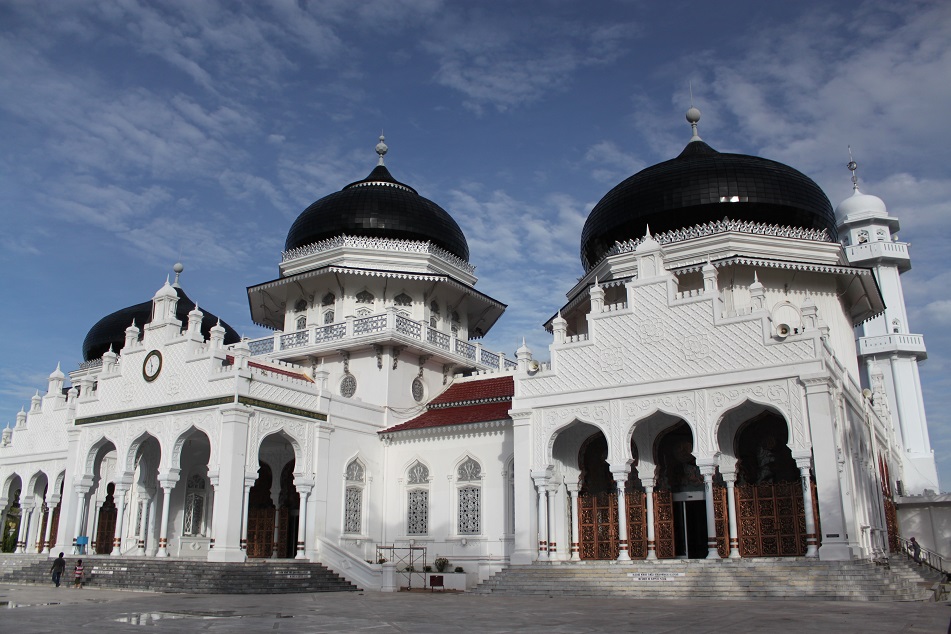
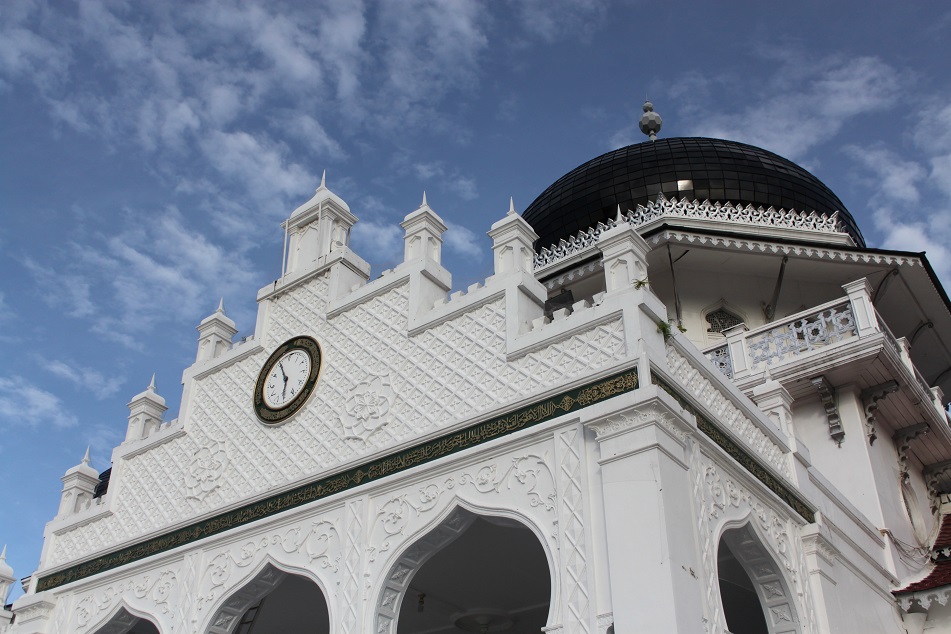
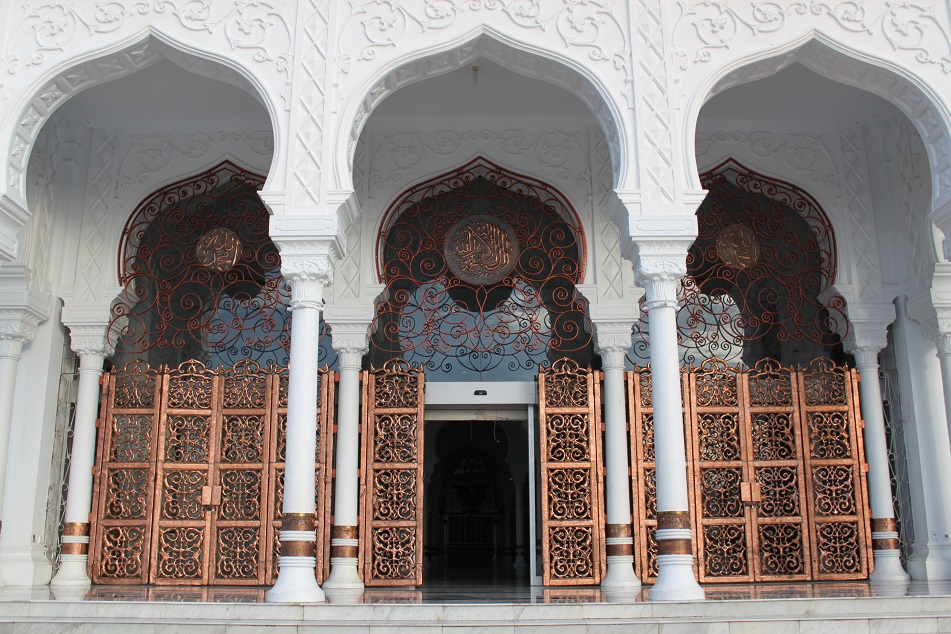

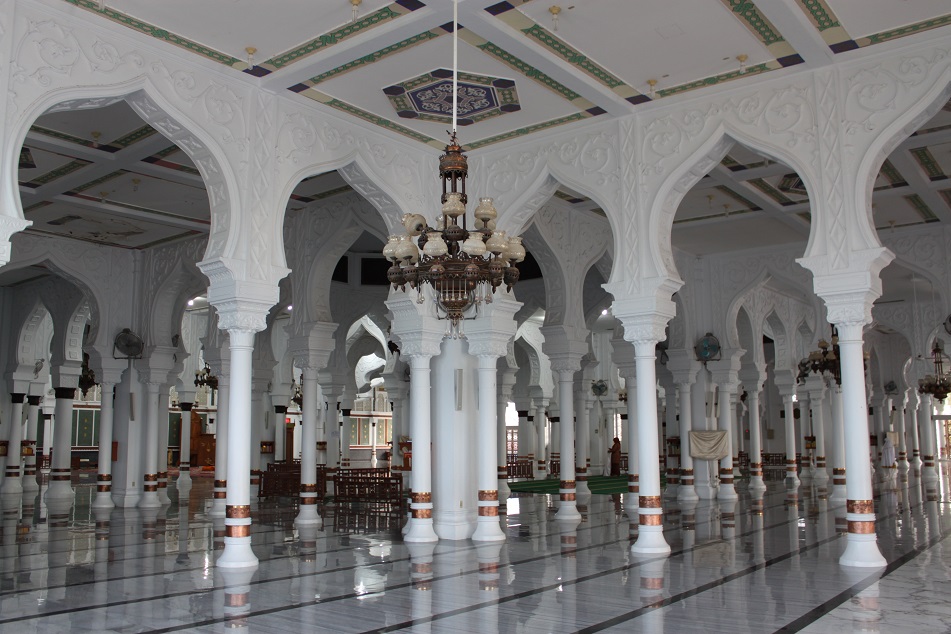


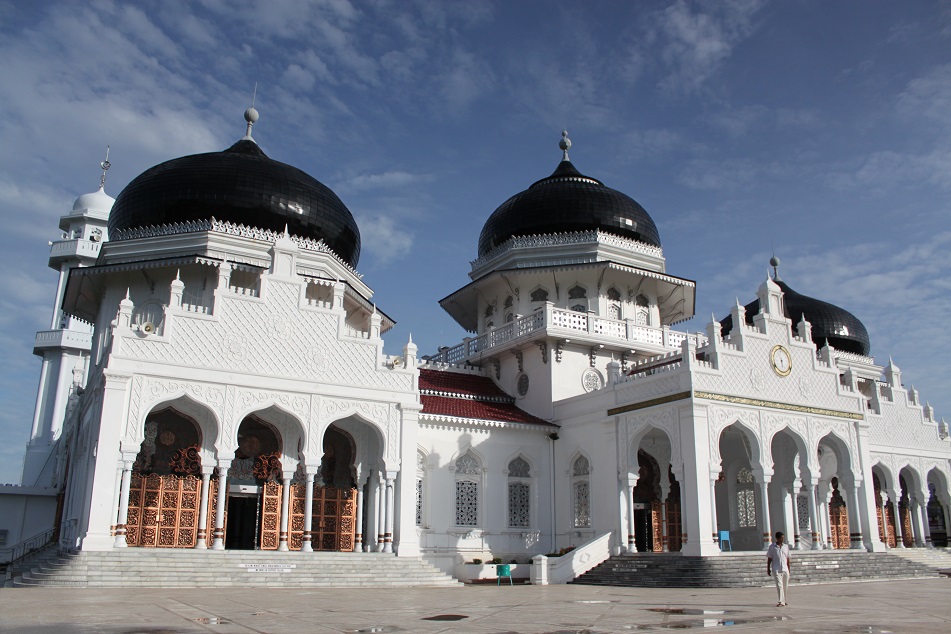
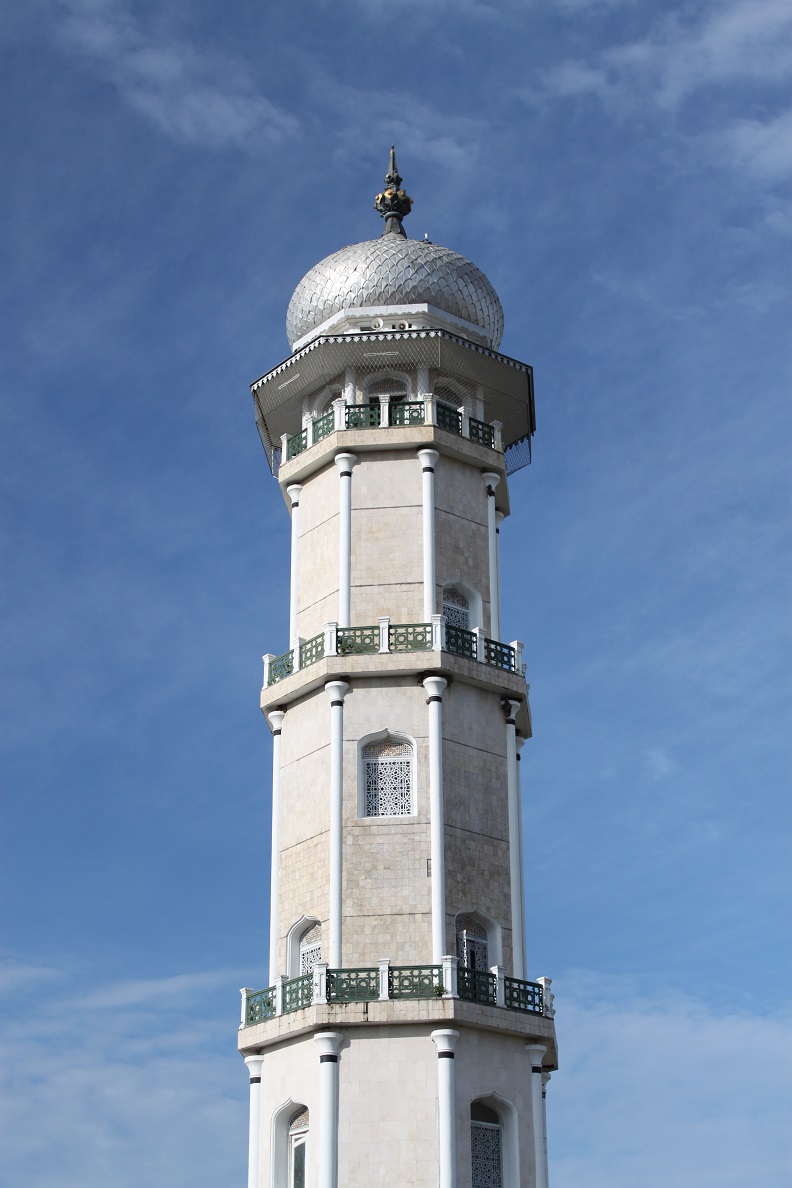

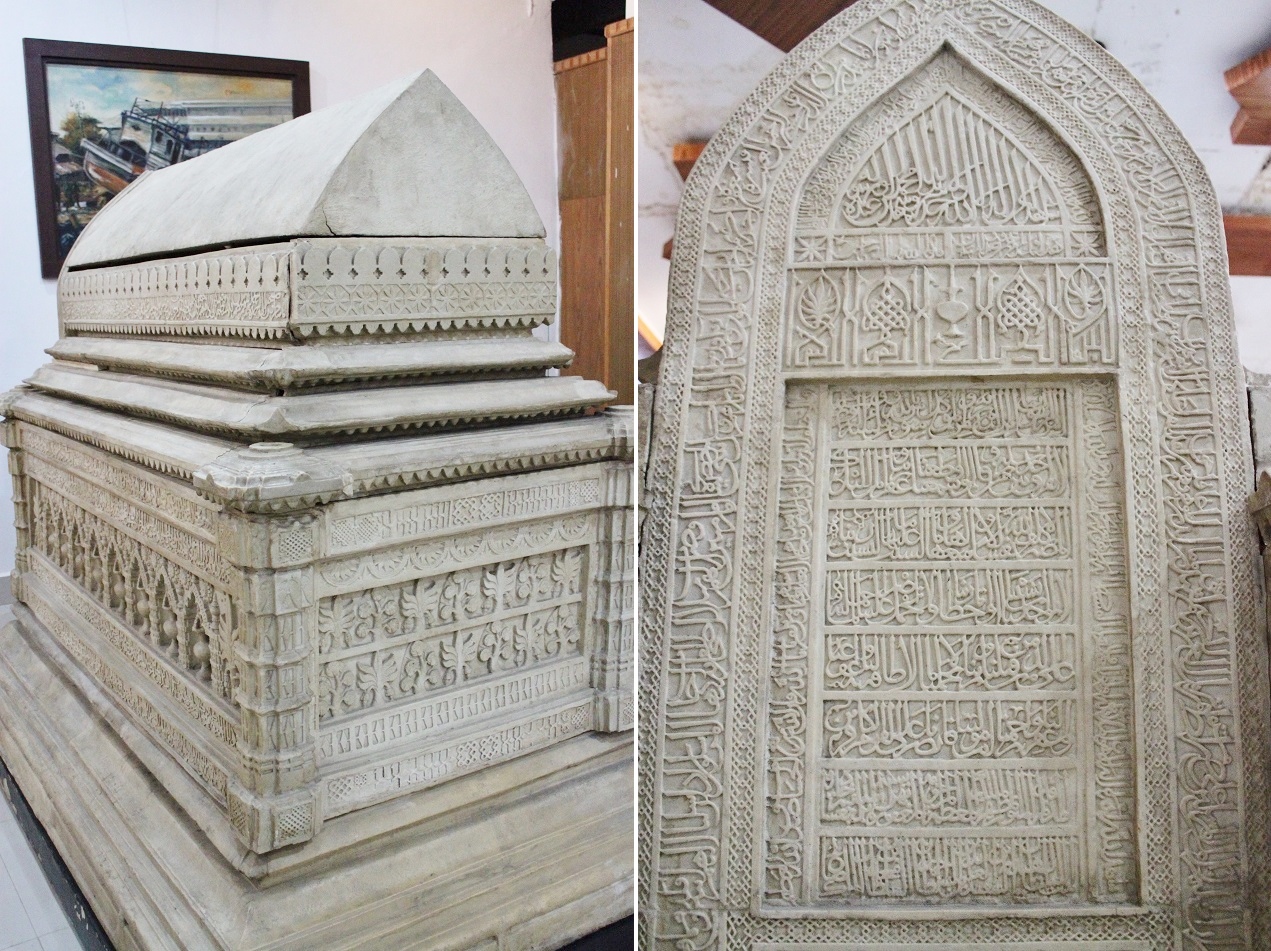
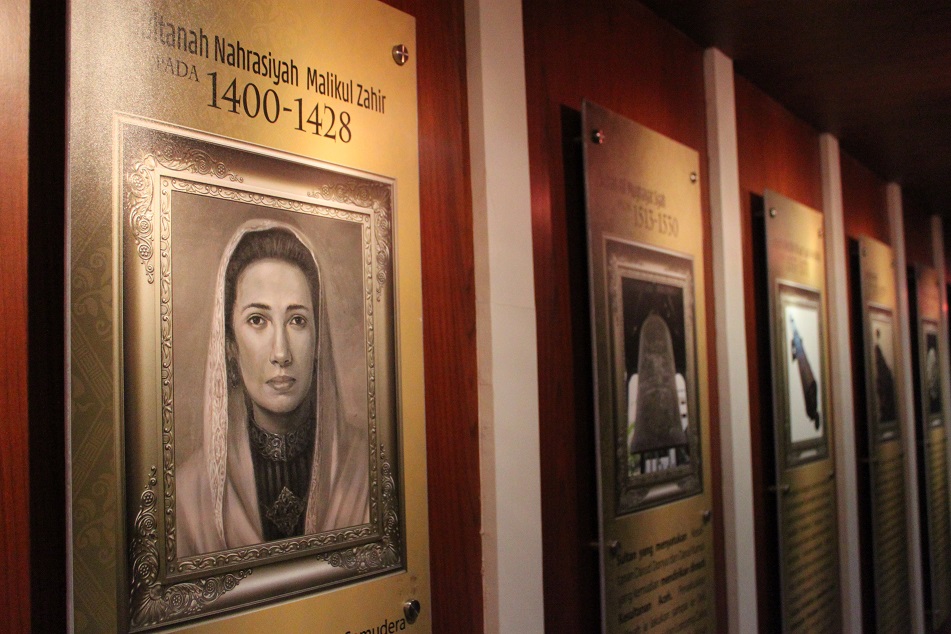
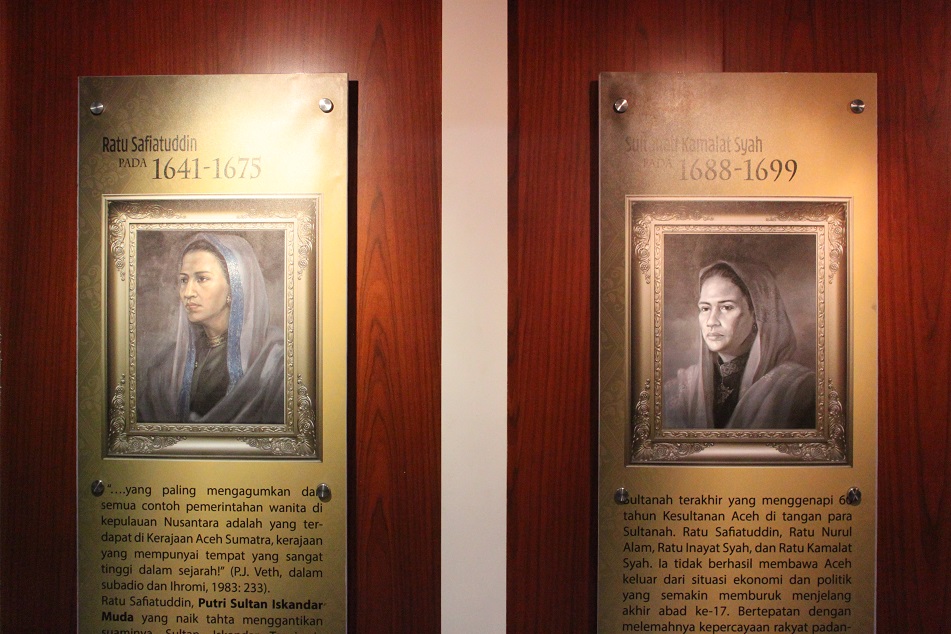
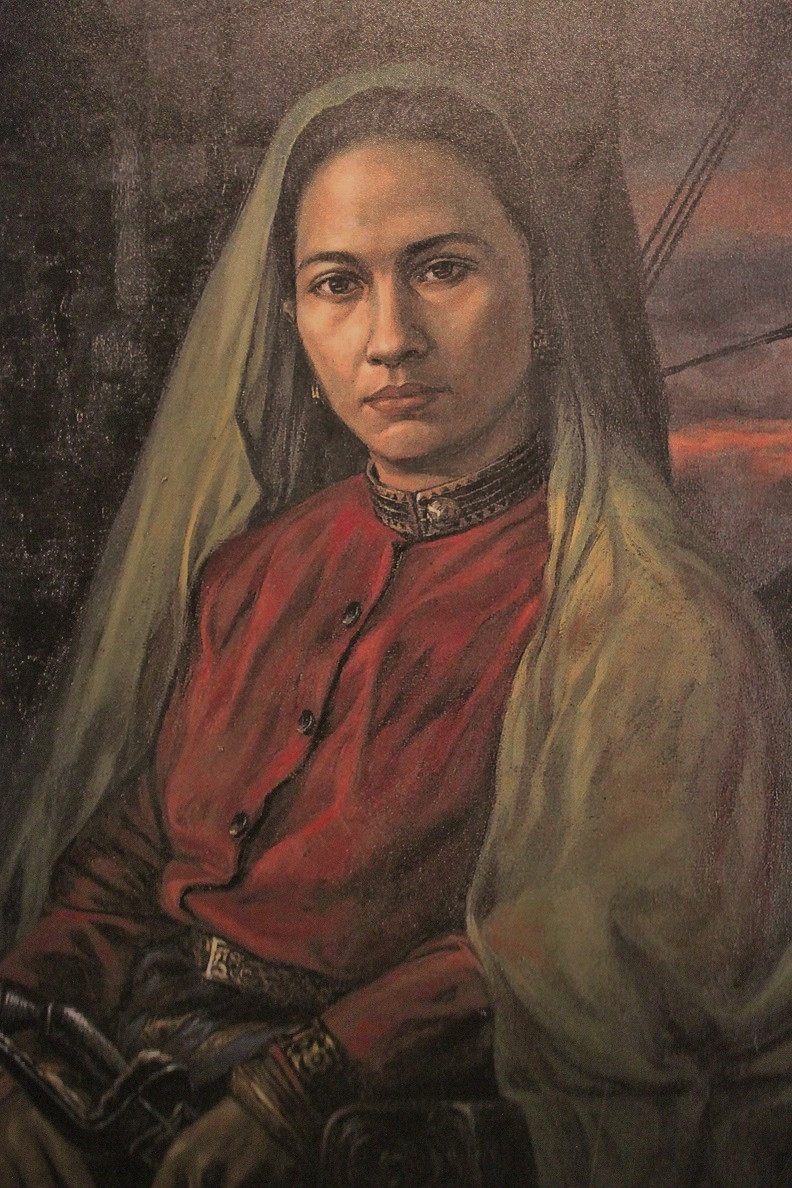
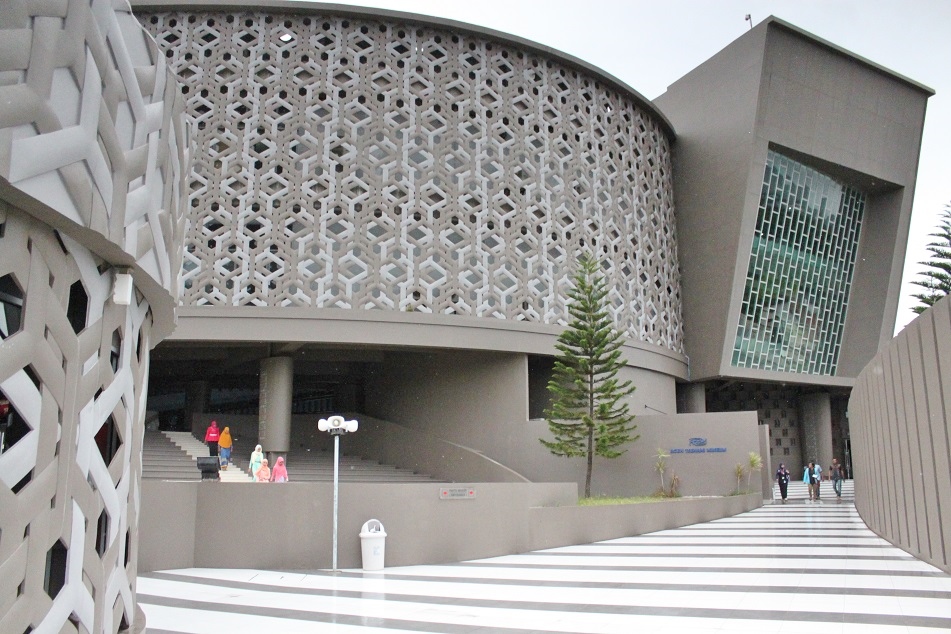
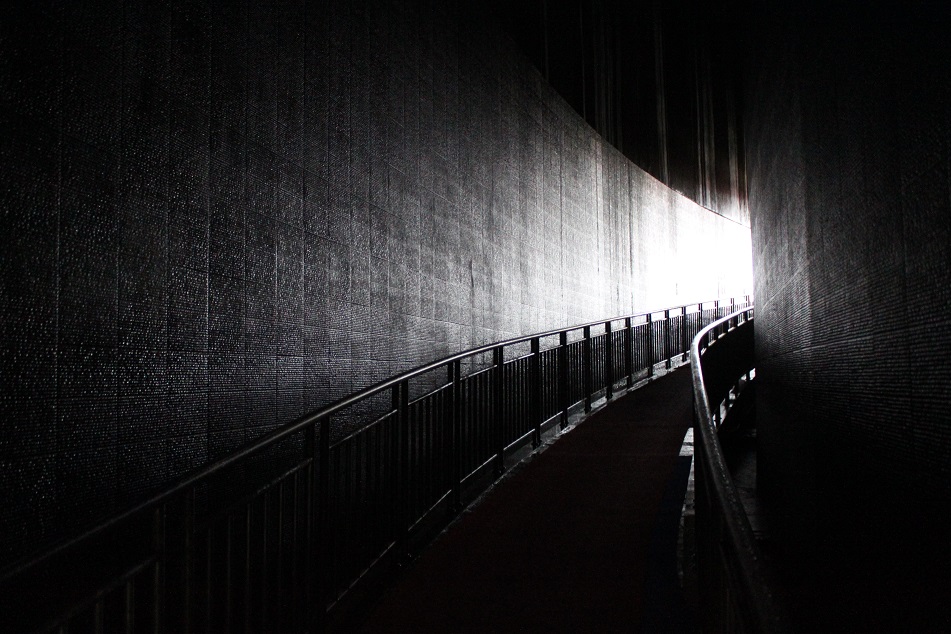
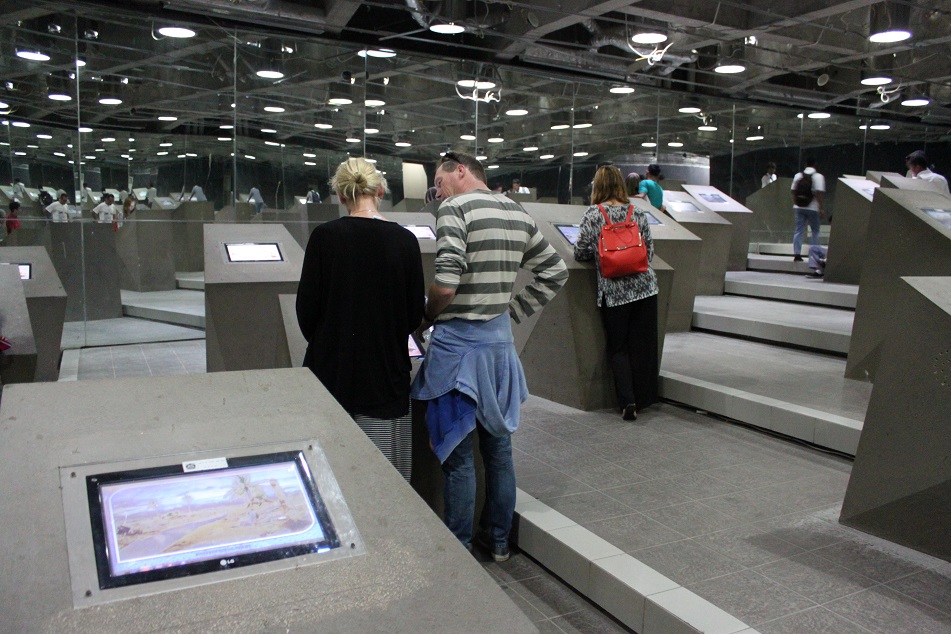
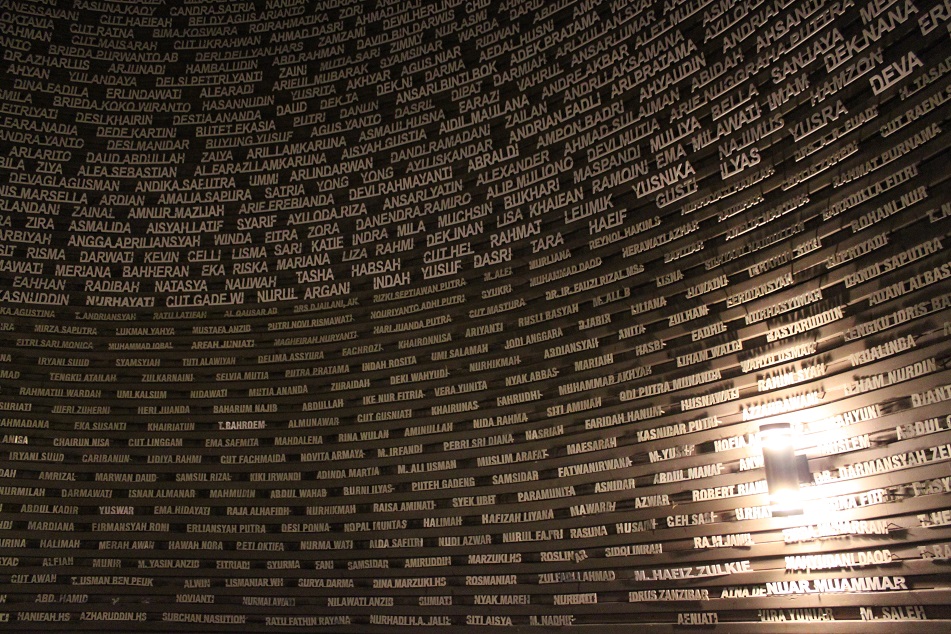
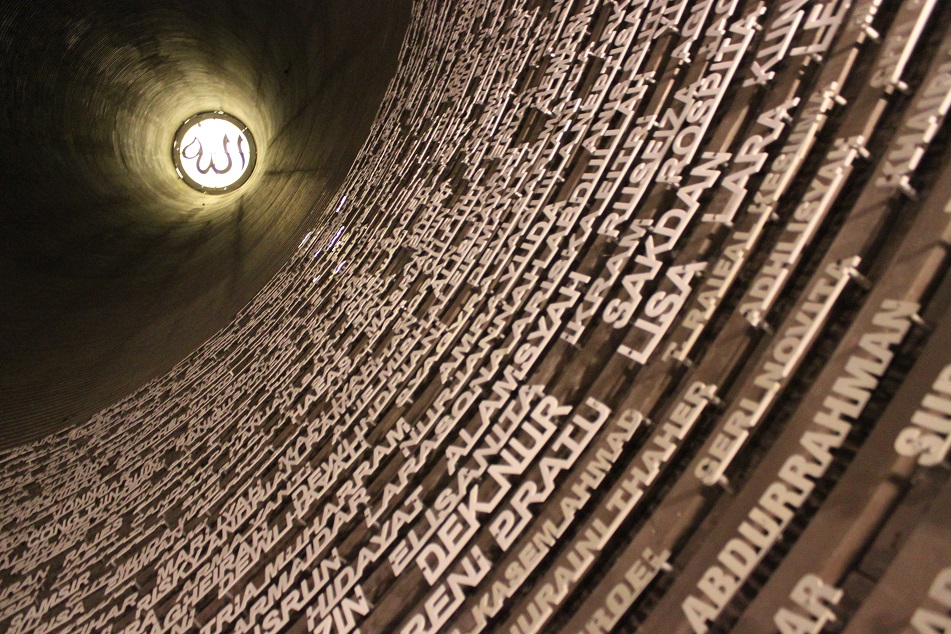
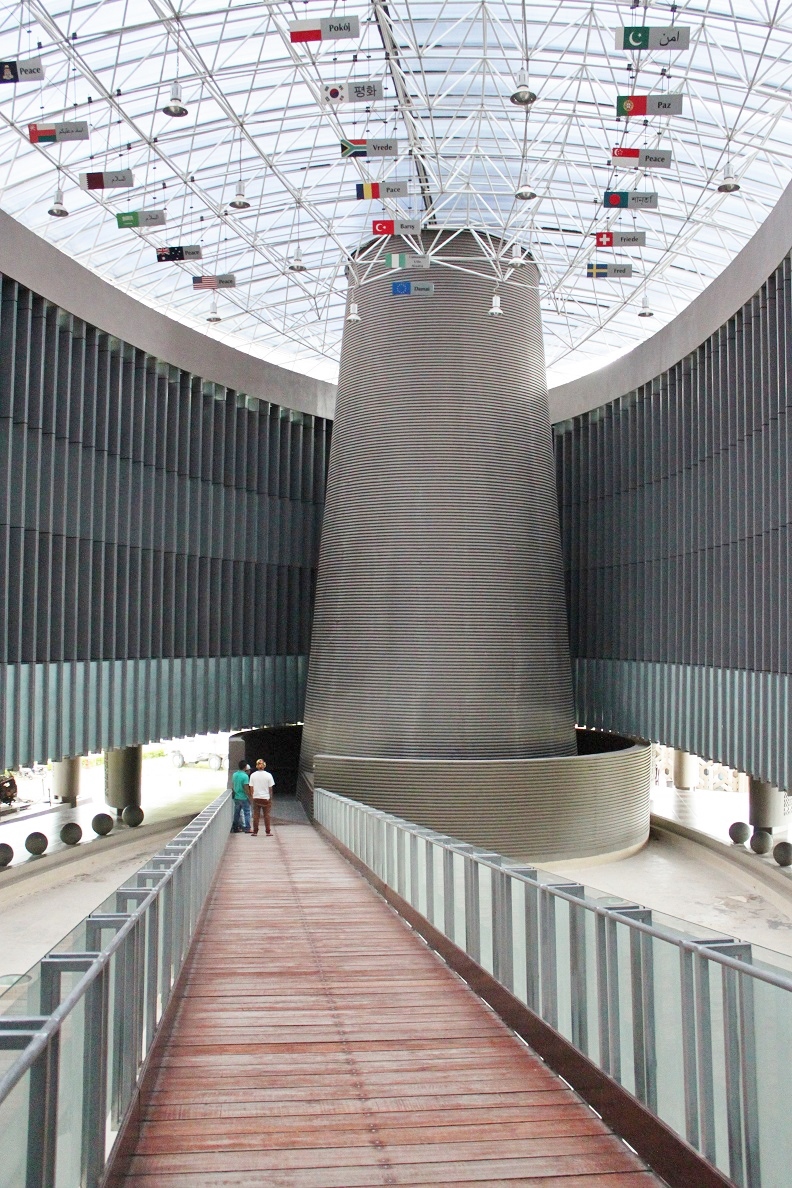
Fantastic post! I enjoyed reading about the history and looking at the colors and pattern of Aceh. Come visit my blog today!
LikeLike
Thank you, Jacob. Aceh, despite its problems, is a very fascinating place to explore.
LikeLike
Sooo well written Bama…
Mata dan rasa jadi sama enaknya hehe… tapi sampai sekarang saya belum bisa lho kesana, kayaknya hati belum kuat deh, masih keinget waktu tsunami itu. Lebay ya… hihihi.. tp sebulan lalu kakak sy lg touring kesana dan tetep aja bilang soal the unseen. Ah… sy makin mundur teratur…. tp makanan itu menggoda banget… durennya kopinya nyam-nyam yah…
LikeLike
Makasih banyak ya mbak..
Nanti kalo suatu saat Mbak Riyanti jadi ke Aceh, kalo mengunjungi Museum Tsunami kuatin hati ya mbak. Tapi museum itu bagusnya dia gak cuma menunjukkan kengerian waktu tsunami tapi juga sarana edukasi untuk masyarakat setempat dan ornag lain mengenai apa itu tsunami, mengapa bisa terjadi, apa yang harus dilakukan, dan hal-hal penting lainnya yang bisa menyelamatkan lebih banyak nyawa di masa datang. The unseen maksudnya yang ‘halus’ ya mbak? Wah untungnya saya gak bisa liat atau merasakan yang gitu-gitu. Mie Aceh paling enak yang saya cobain justru ada di warung kecil di Pulau Weh mbak. Lebih enak dari Mie Aceh terkenal yang ada di Banda Aceh. Wah di sana ada kopi duren ya??? Tau gitu saya nyobain. 😀
LikeLiked by 1 person
Agree that this is a wonderful post detailing the history and particularly the strength of the role of women which was slowly eroded in Islam (as happened with western religions)
LikeLike
Thank you for reading. I believe it is important for people today to learn about the history of religions because things are not as simple as it seems. A better understanding of history helps us better understand the world, so we can do our part to make this world a better place, no matter how little.
LikeLiked by 2 people
so well written. what a woman can do is beyond one’s imagination
LikeLike
You’re absolutely right, and exactly because of that reason some men prefer to see women doing their ‘traditional’ role. Thank you for reading.
LikeLiked by 1 person
my pleasure:)
LikeLike
Bama…some outrageously nice photos in this piece, and interesting detail and history. I thought I once read that Hagia Sofia in Instanbul set the blue print for other mosques that followed. Have you read that? One thing I noticed in your shots and also in a mosque I recently visited in Serbia is the chandelier. In the Grand Mosque in Abu Dhabi, there hangs one beautiful and huge chandelier. I wonder if all mosques now hang chandeliers?
LikeLike
Thanks a lot, Badfish! I haven’t read about that but it’s not hard to see how Hagia Sophia’s dome has inspired Muslim architects over the centuries. It seems that its blue print has indeed been copied, adjusted, and replicated in many mosques all over the world. About the chandelier, it’s another feature many mosques copied from those built before them. In Indonesia a lot of small mosques do have chandelier, although many of them look rather gaudy or very plain.
LikeLiked by 1 person
Right, I’m going to have to research the Sophia thing. I don’t remember where I read or heard that. The chandelier in the Grand Mosque in Abu Dhabi is outrageously colorful. It may be the largest in the world.
LikeLike
I’ve seen some images of that chandelier in Abu Dhabi, and those colorful beads always make me hungry as they remind me of sweets. I prefer the one hanging inside the Grand Mosque of Muscat in Oman, though.
LikeLiked by 1 person
The AD mosque is fairly awesome, and the chandelier, too, but I’m not too enamored by it, seems a little over the top, but still impressive. The one I saw in Serbia was tiny by comparison, but clear glass and unique…and cool.
LikeLiked by 1 person
Masjid baiturrahman udah gak perlu diragukan lagi kemegahannya ya bam. Arsitekturnya betul betul menakjubkan, bukan hanya di luar, masjidnya juga udah terbukti tangguh.
museumnya tsunami itu juga gak kalah keren apalagi bgian dalamnya. Itu semua nama korban tsunami ada disitu ya bam?
LikeLike
Bener banget. Tapi sayangnya pas saya di sana di area yang biasanya jadi titik pemotretan tampak depan masjid sedang ada pekerjaan pembuatan payung raksasa yang katanya terinspirasi dari Masjid Nabawi. Payung serupa juga ada di Masjid Agung Jawa Tengah di Semarang, tapi sayang beribu sayang terakhir saya ke sana minggu yang lalu kondisi beberapa payungnya agak memprihatinkan. Semoga pekerjaan perluasan atau konstruksi apapun di sekitar Masjid Baiturrahman tidak merusak estetika bangunannya yang memang sangat elegan.
Yang saya suka dari Museum Tsunami selain arsitekturnya adalah kelengkapan informasi dan alat peraga, meskipun tidak semuanya berfungsi. Lagi-lagi maintenance atau perawatan menjadi masalah yang sepertinya memang banyak terjadi di Indonesia. Yes betul, di dalam museum itu ada semua nama korban tsunami di Aceh.
LikeLiked by 1 person
Moga-moga saja payung payung yang nantinya ada disana tidak mengganggu pemandangan kalau para fotografer mengambil foto tampak depan masjid. Kalau masjid agung jawa tengah saya belum pernah, tapi kalau masjid nabawi udah pernah, di masjid nabawi ada banyak payung payung hidrolik yang semuanya masih berfungsi dengan baik.
Wah, kalau semua nama korban ada disitu, saya gak bisa bayangin betapa rumitnya pencetakan nama para korban…. byak banget. Jadi pengen banget ke aceh…. 🙂 🙂
LikeLike
Kalo cari di Google pemandangan Masjid Baiturrahman, akan banyak foto tampak depan dengan frame lekukan gerbang bernuansa Islami. Payung-payung itu dibangun persis di lokasi itu, jadi entahlah nanti pemandangannya akan seperti apa.
Untuk nama-nama korban tsunami sayangnya beberapa nama udah lepas dari dinding ruang tersebut di Museum Tsunami. Ada yang udah setengah copot. Tapi secara keseluruhan museum ini layak dikunjungi kok.
LikeLiked by 1 person
Bama I wonder if you might know the answer to my question on those beautiful copper doors. copper often turns green as it is exposed so would all of this require regular cleaning? I’m imagining it would take quite the crew to keep things looking so beautiful.
Another amazing collection of photos and research.
LikeLike
Actually I have no idea how often they clean those copper doors. Hopefully they do it regularly so those beautiful doors will always look stately and pretty. Thanks for reading, Sue.
LikeLike
I was disappointed that I didn’t make it this far north to Aceh but at the time there was unrest in the region. I can see from your post, I’ve definitely missed an experience, but better safe than sorry.
LikeLike
Better safe than sorry indeed. I believe some of the scars remain, hence the importance of continuous reconciliation process.
LikeLiked by 1 person
Wow! Its gorgeous. Honestly had never heard of this. An architectural gem. And so rich in history!
LikeLike
Aceh is a fascinating place, indeed. If only I had more time to explore the province.
LikeLike
Lebaran kemarin sempat berkunjung juga ke Banda Aceh, dan mesjidnya masih juga dalam masa konstruksi. Sedih banget rasanya waktu ke museum, apalagi waktu melewati lorong dan masuk di ruangan berisi nama-nama 😦
LikeLike
Rasanya memang surreal sih pas mengunjungi museumnya. Mulai dari suasana mencekam pas masuk ke lorong gelap itu, terus foto-foto dokumentasi kerusakan yang ditimbulkan tsunami, hingga alat peraga yang menunjukkan before and after tsunami menerjang Banda Aceh.
LikeLike
A fascinating account of a little-known part of the world Bama. So it took a tsunami to get them to stop fighting. Human beings are a puzzling lot. The mosque is an exquisite building, as it the museum.
Alison
LikeLike
Thank you, Alison. Sadly sometimes it does need a grave event in such scale for humans to come together in peace. Human beings are a indeed a puzzling lot.
That mosque is not the biggest mosque in the country, but it is one of the most exquisite I’ve ever been to.
LikeLiked by 1 person
Truly impressive – I have never seen the inside of Baiturrahman Grand Mosque in pictures before. Great story telling once again, Bama. I am not sure if I will visit Aceh in the future but from your post, the province has plenty to offer – from history to architecture and as well nature.
LikeLike
Thank you, Indah. I know a place you would love in Aceh: Pulau Weh. It should be great for snorkeling — ‘should be’ because I had a minor motorbike accident there which prevented me from snorkeling at the most beautiful sites around the island. Someone also told me that a German once saw corals as huge as a car on the western side of the island. I don’t know if that is true, but it’s worth investigating, isn’t it? 🙂
LikeLike
Pingback: Sabang and Hikkaduwa: After the Tsunami | What an Amazing World!
Pingback: Rise of Islam in Java | What an Amazing World!
Reblogged this on Truth Troubles: Why people hate the truths' of the real world.
LikeLike
so impressive, I must learn a lot from your blog
LikeLike
Thank you for reading and leaving such a kind comment. Much appreciated!
LikeLiked by 3 people
A very thoughtful and detailed post, Bama. I was pleasantly surprised to see some women in Banda Aceh going about their daily lives with their hair uncovered – though it has to be said that they were from the ethnic Chinese minority. Your photos of the mosque’s interior are new for me; unlike Medan’s Grand Mosque in neighbouring North Sumatra, it was pretty clear that I couldn’t go in as a non-Muslim. The tsunami museum was sobering, to say the least, and I felt sad that the disaster made the Acehnese more religious/conservative because so many thought it was divine punishment. How ironic that the city administration allows American fast food chains like A&W but bans Valentine’s Day, Christmas and New Year’s celebrations outright.
LikeLiked by 2 people
Thank you, James. As for the hair cover, or hijab, I believe whether one wears it or not should be based on her own decision, not imposed by regulation. Of all interpretations of Islam, I do wonder why some choose to go with the austere one. Believing in which interpretation to follow is one’s right, but forcing others to conform with what you believe is totally wrong. Let’s hope they won’t go too far — although they have in some cases.
LikeLiked by 2 people
Pingback: Minangkabau: the Land of Buffalo Horns | What an Amazing World!
Impressive! I love the photos you made in the Chamber of Memory.
LikeLiked by 2 people
Much appreciated, Len!
LikeLiked by 2 people
I am impressed by your thought and description. I was wondering how did you find such detailed information? from dialogues during your visit or internet diving?
I am an Acehnese by the way, and I am proud that you put such a high bar in your writing about Aceh. Salute!
LikeLiked by 2 people
Hi Firman. I gather information from different sources, chiefly local people, the Internet and books. Sometimes I recall what I learned at school and do some fact-checking before writing a post. But I do have a penchant for historical accounts written by erstwhile explorers as they provide us with useful insights of how life in a particular place was like back then. Thank you so much for your kind words, Firman. I’m really glad this post is well-received by you as an Acehnese.
LikeLiked by 2 people
Pingback: Malacca: The Gateway to East Asia | What an Amazing World!
Pingback: Medan: From Deli to Tjong A Fie | What an Amazing World!
Pingback: Batak: From Cannibalism to Christianity | What an Amazing World!
Pingback: Food Nationalism | What an Amazing World!